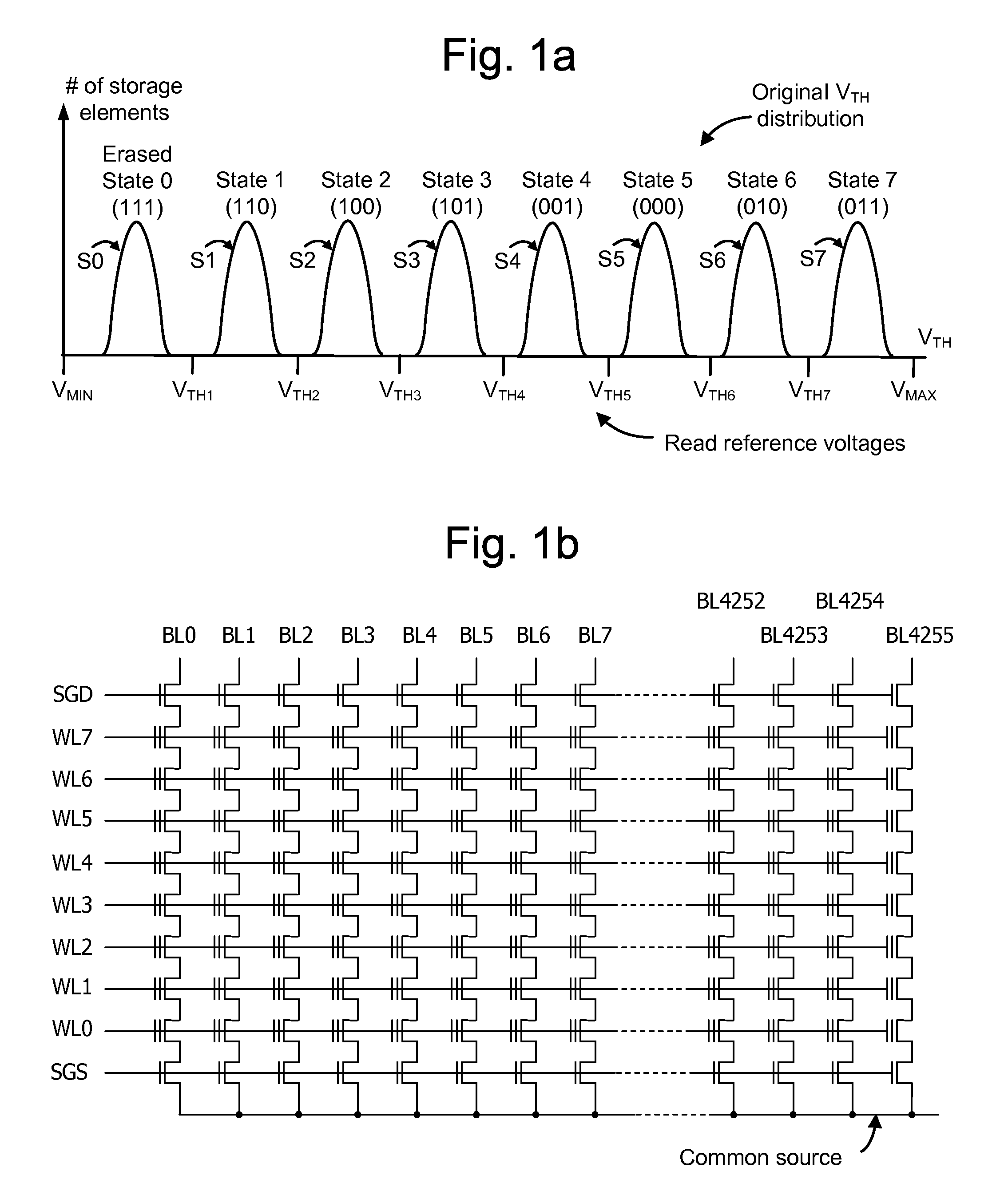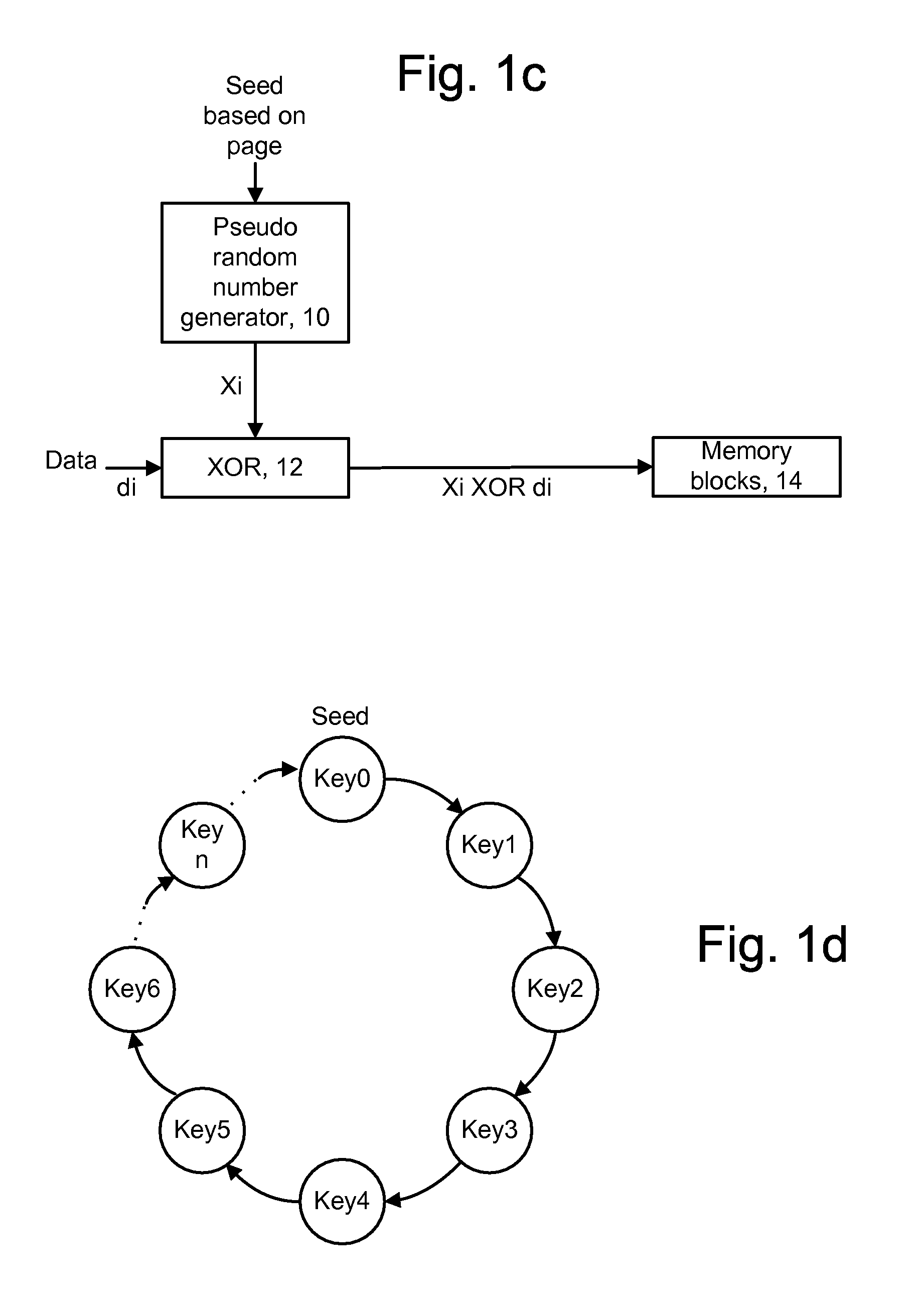Method for page- and block based scrambling in non-volatile memory
a non-volatile memory and page-based scrambling technology, applied in the field of memory devices, can solve the problems of raising the threshold voltage of a storage element, errors can be caused during read operations, etc., and achieve the effect of significantly reducing the probability of errors and pattern length
- Summary
- Abstract
- Description
- Claims
- Application Information
AI Technical Summary
Benefits of technology
Problems solved by technology
Method used
Image
Examples
Embodiment Construction
[0057]The present invention provides a method and system for programming and reading data with reduced errors in a memory device.
[0058]FIG. 1a depicts a threshold voltage distribution of a set of storage elements, a corresponding assignment to data states, and associated read reference voltages. The figure depicts an original or baseline threshold voltage (VTH) distribution which exists after a set of storage elements is programmed.
[0059]For historical reasons, writing data to a flash cell is called “programming” the flash cell. The terms “writing” and “programming” are used interchangeably herein. This is done by applying voltage pulses to the cell, to inject electrons from the cell's silicon substrate through the cell's oxide layer into the cell's floating gate, until the threshold voltage of the cell is high enough within the voltage window to represent the desired bit pattern. The threshold voltage of a flash cell is in a range, called the “voltage window,” as shown in FIG. 1a, ...
PUM
 Login to View More
Login to View More Abstract
Description
Claims
Application Information
 Login to View More
Login to View More - R&D
- Intellectual Property
- Life Sciences
- Materials
- Tech Scout
- Unparalleled Data Quality
- Higher Quality Content
- 60% Fewer Hallucinations
Browse by: Latest US Patents, China's latest patents, Technical Efficacy Thesaurus, Application Domain, Technology Topic, Popular Technical Reports.
© 2025 PatSnap. All rights reserved.Legal|Privacy policy|Modern Slavery Act Transparency Statement|Sitemap|About US| Contact US: help@patsnap.com



